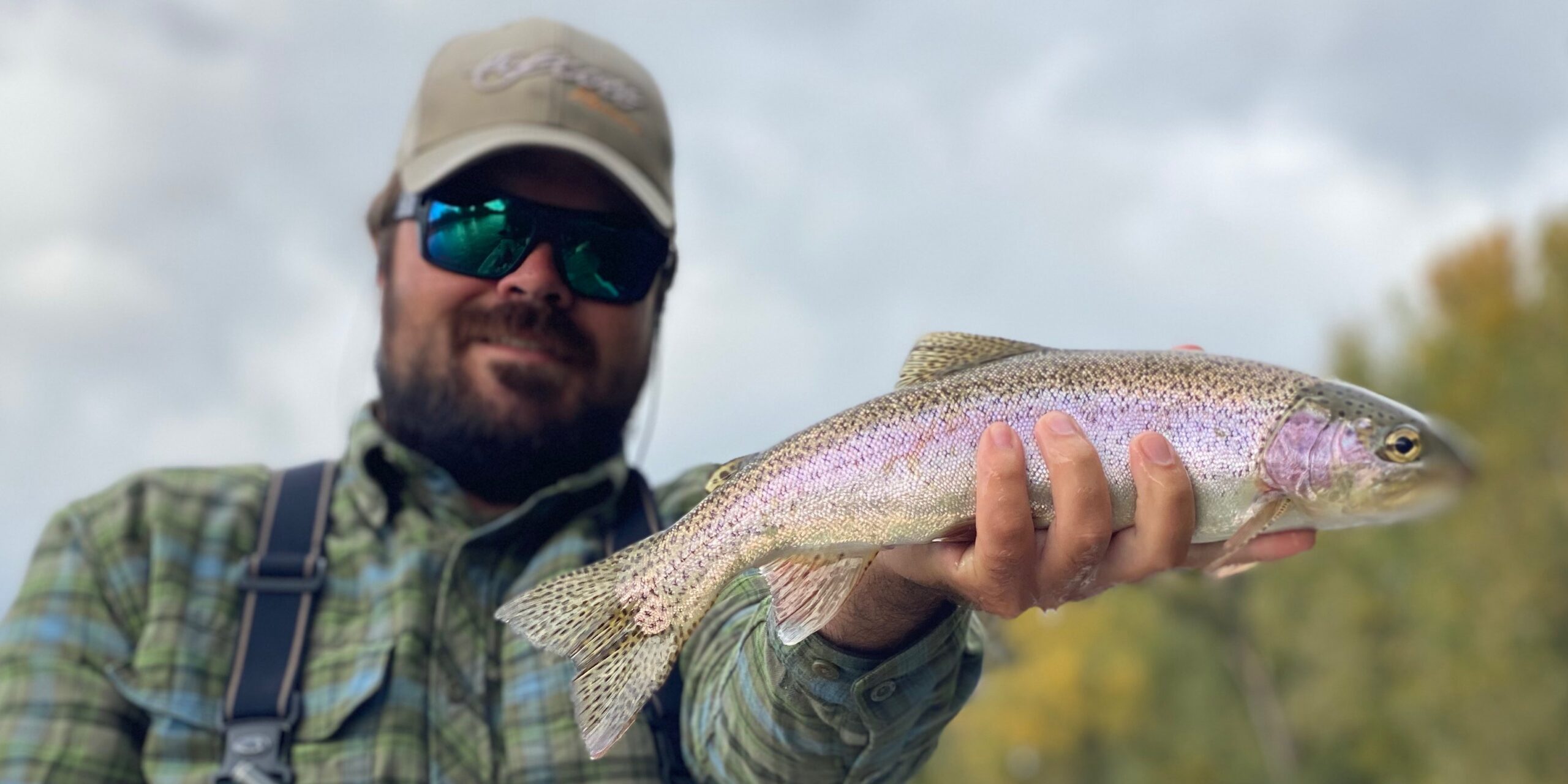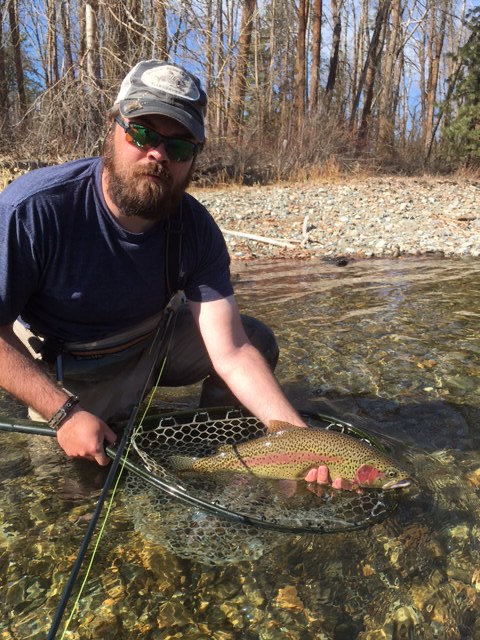
Euro nymphing is an extremely effective way to fish for trout. Unlike indicator fishing where your flies are at a fixed position at the depth your bobber is at, when euro nymphing the depth of your flies is determined by you.
If you are fishing a drop off, you can raise up your arm up high and, as the flies go over the drop, lower your arm to adjust to the depth change. This allows your flies to always be in the strike zone.
One of the other benefits is that you literally feel the fish eat your fly when euro nymphing.
Much like streamer fishing, we are tight to our flies. So when the fish eats the fly, we can feel it eat. Sometimes it’s an aggressive take and our line starts going in a different direction, and sometimes it’s just as subtle as our line stopping. Feeling the difference of what is a fish eating a fly and what is bottom takes a little practice. What I recommend is to set the hook more often than not until you get the feel down. “Hook sets are free,” I always say!

Another reason why this method is more effective then indicator fishing is that many fish eat our flies and let go before the indicator has a chance to react in one way or another.
I was told a story of an angler that went under water with goggles and a snorkel and watched as his friend fished a run. He came up and asked why he wasn’t setting the hook on all those fish? The angler asked, “What are you talking about my indicator never moved.” So the man in the water would raise his fist out when a fish ate the fly and they were amazed on how many fish can be missed when indicator fishing. I always add to that by telling my clients, “How many times do you go to recast and you have a fish on without the indicator moving?”
There’s a reason why the USA Fly Fishing team uses this effective method.
In the video “Modern Day Nymphing,” they talk about how they were always losing to the other countries. After they found out everyone was using this method, they dove into it and began to compete better against the other teams. They did a test, first angler would go through with dries, second angler with dry-dropper, and the third would tight line. The angler that was tight line nymphing would ALWAYS out fish the other two anglers.
Watch my video below to see how I setup my rig for the Yakima. You can also see what kind of rods and lines I use on my Gear page.
Nymphs aren’t the only thing we have to use on a tight line nymphing rig either. Our point fly (bottom fly) is our heaviest fly in the rig. We can substitute a stonefly for example with a sculpin or other streamer and dead drift or swing with it with a nymph or soft hackle above it. Or we can tie on an adult caddis above our point fly and bounce it off the water like it is laying eggs. This system is very versatile and fun to use. I enjoy it, and it has become my favorite method to fish because I feel more connected to the flies and the fish when fishing it. Plus of course everyone likes a tight lined grab!
There’s a misconception that this method is impossible from a drift boat and that couldn’t be any further from the truth. This method from a boat is very effective as the boat allows us to extend our drifts much further then what we could fish if we were wading. Some of the draw backs of this method is that we do not get near as long of a drift as with an indicator and it is very hard in the wind as the wind makes it near impossible to keep the line tight. Ways I’ve found to combat the wind is watch your leader closely while trying to keep your depth. If the sighter straightens out or moves, set the hook.
If you want to try this method from a boat or wading, make sure you mention it to me on the phone when booking your trip. We specialize in tight line nymphing trips and I have more time on the water tight line nymphing than any other guide service on the Yakima River.
This is my preferred method of fishing and I love it. When I started doing this years ago it also made me a better angler and guide as I learned so much more about reading water and setting up a drift to fish for trout, whether it be tight line nymphing, dry fly fishing, or indicator fishing.
